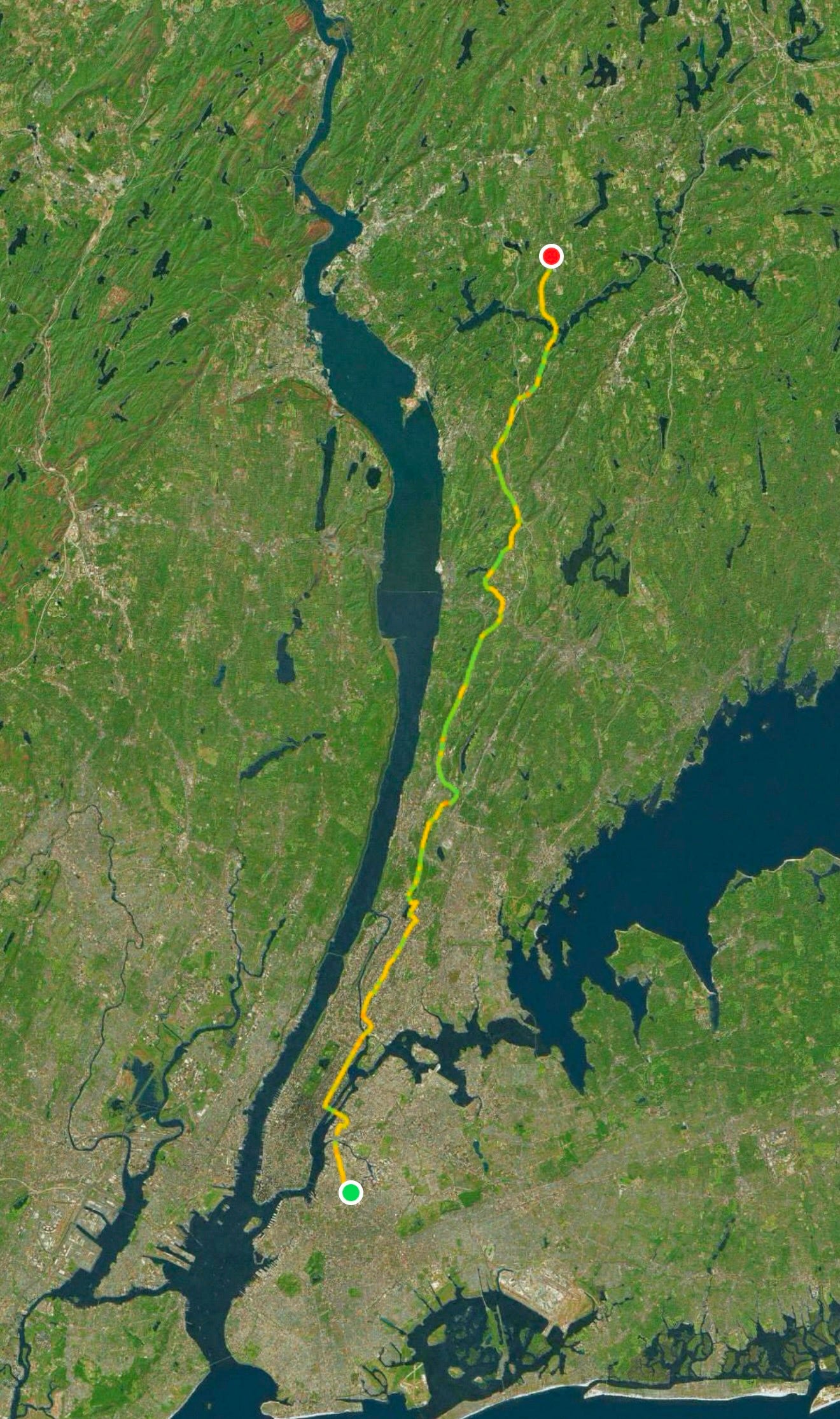New territory
This is Western Coffee—notes on building the creative body. Last time: Constraints. The whole series is here. Please share this email. Sign up free or, if you’ve done that and enjoy the newsletter, please sign up for a paid subscription to support my work below.
Ian Frazier’s vigorous ode to the Bronx came to mind last weekend as I tried out a new, four-borough bike route to the edge of the city and the trail that heads upstate. After following First Avenue up through Manhattan from the Queensboro to the Willis Avenue Bridge, both of which the marathoners cross in November, I found myself for the first time on the Grand Concourse, a surface street (spared conversion to an expressway in the ’40s) modeled on the Champs-Élysées that is five miles long and comprises ten lanes at its widest. Much of that length includes buffered bike lanes, making it the natural route to Van Cortlandt Park, at the Bronx’s north edge. (Like many major roads in New York—which invented the parkway—this one originated as a way to link the crowded, dirty city core with the redeeming green spaces outside it.)
For about the billionth time, I remembered how fun it is to ride a bike into a neighborhood you’ve never seen. In both of the big cities where I’ve lived, this one and Los Angeles, you often stumble on a block that feels like it’s forgotten more than your hometown remembers. The Grand Concourse was like that, block after block of life upon life upon life—as dense-feeling as any part of New York, but spooled out, winding, not the endless right-angled slot of an avenue but something more like a river. Parts of it are pretty rundown, but the whole thing has a kind of purposeful, unified handsomeness—the longest complete sentence in the city. I had heard of the Grand Concourse, but had no concept of its scale or scope, of how completely it is its own thing. Turns out that as with that other Grand destination, the Central Terminal, the name isn’t just a brag.
When you’re a kid, some parts of your world show their connections plainly: You can comprehend and recall the walk to school or church, the gap between the fences through which it’s possible to pass to your backyard neighbor. Others, like the drive to Grandma’s, are more mysterious—too big and complicated to grasp, with that long anonymous freeway in the middle. One of my favorite parts of moving new places has always been twofold: to feel that innocence again, to know more and more parts of a city but not how they fit together; and then to lose it, finding how this point connects to that one, gluing together the sections of your mental model so that many ideas of a place eventually become more like one.
The same principle applies when you reach the edge of the park and ride through the narrow leafy tunnel of the Empire State Trail into the suburb Yonkers, and then further into the countryside; you see familiar sights and have more time to contemplate what joins them, what lies between. Forty-seven miles from Brooklyn, a little while past the elegant wood-floored bridge over the New Croton Reservoir, James picked me up in the town where we always stop at Trader Joe’s, and we started planning what to make for dinner.
Kindly send me your thoughts, questions, and provocations: dmichaelowen@gmail.com.



